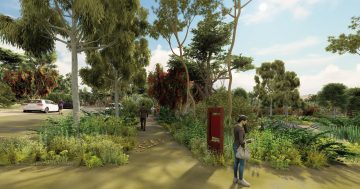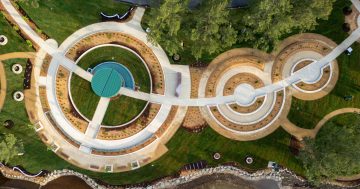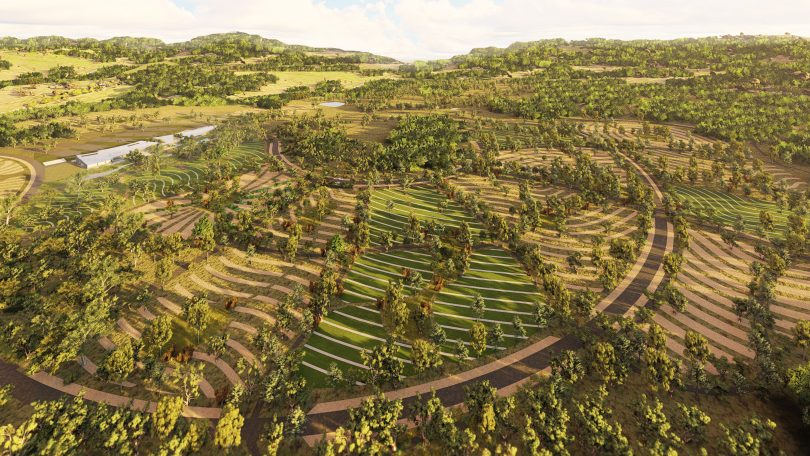
An artist’s impression of the Southern Memorial Park bush cemetery. Images: ACT Government.
The first stage of Canberra’s new public cemetery will now include natural burials in response to community demand, according to the tender for a detailed design of the facility leading to a development application.
The Southern Memorial Park (SMP) will be a major new cemetery to meet projected demand in Canberra’s south where there is a lack of burial, crematorium and memorialisation services.
Sited on Mugga Lane in Hume, the 76-hectare cemetery will be developed in four stages over the next 100 years and allows the current use for horse agistment to continue with minimal to moderate disruption over the next 50 years.
Stage 1 is in the south-eastern portion of the site adjacent to the Mugga Lane Solar Park.
The SMP will also be a bush cemetery, and the revised Masterplan released last year shows a natural setting as well as landscaped gardens.
The first stage, intended to meet demand for five years, will include about 2500 burial plots, a new signalised entry on Mugga Lane, a works depot, car park and nature play area, and will now require between 113 and 165 natural burial sites.
The government had planned to leave the inclusion of natural burial sites until Stage 3 but has now brought this forward after community feedback to the draft Masterplan.
It has been given three sites to choose from – an area currently not being used within the Stage 1 boundary, a part of the traditional burial area, or an area outside but adjacent to the Stage 1 boundary.
But the first is the preferred option as it is located within the Stage 1 boundary and fenced area. It is a partially treed site, requires no major additional infrastructure, and there will be no impact until Stage 3 is built 50 to 85 years from now.
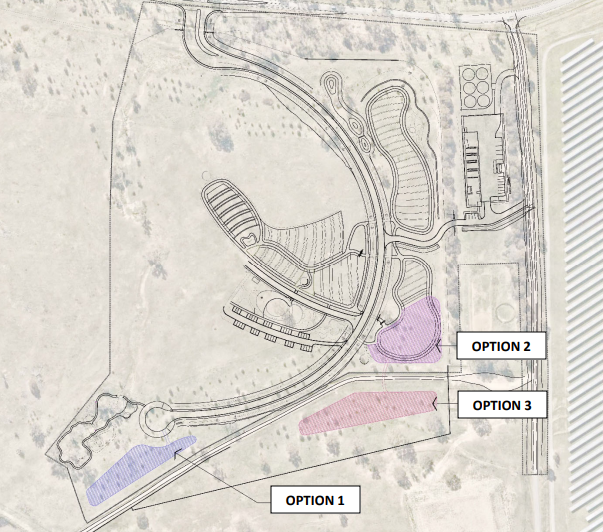
Natural burial site options for Southern Memorial Park.
It will mean a loss of about 145 gravesites but supply 120 natural burial sites.
A natural burial site will need some gravel paths and a memorial stone, weed management and the re-establishment of native meadow, and some extra geotechnical investigation.
A natural burial is where the body is buried in environmentally friendly coffins or without a grave liner.
Gungahlin Cemetery has offered natural burials since 2016, and by last year, Canberrans had purchased about 100 sites, 60 of which had been used, with room for an additional 500 spaces to meet future demand.
The successful tenderer will deliver a detailed design for Stage 1, a staged works implementation plan, construction-ready drawings, cost estimates and technical reports, including environmental, cultural and traffic studies to support a development application and other submissions.
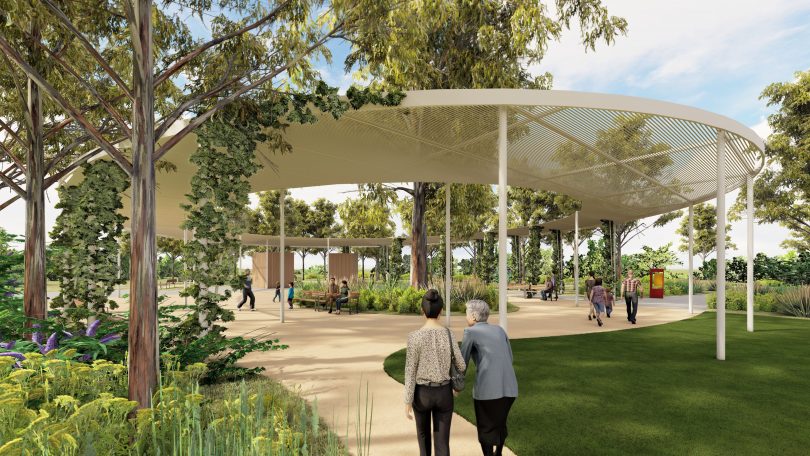
The proposed welcome garden at Southern Memorial Park.
Stage 2 will complete the main car park and provide a crematorium, memorial halls, an outdoor chapel, visitors centre, and an administration building to be built over the next 50 years, although the government has said the “the most-needed facilities” will be operational within a decade.
Stage 3 will take a further 35 years to complete and Stage 4 the next 15 years.
Woden Cemetery is at capacity, but the government says Gungahlin Cemetery still has enough space to service the Territory for the next 50 years.
According to the tender, the contract will be awarded in March 2022. A detailed design is expected to be ready for approval by January 2024 and a Development Application lodged in March 2024.
The tender closes on 17 February.












